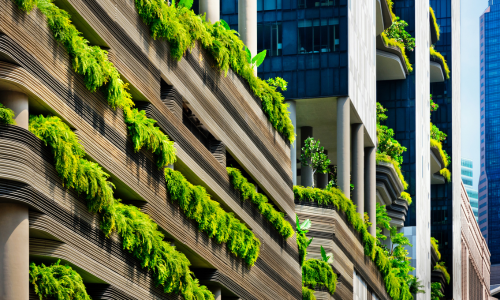As the world grapples with climate change and environmental degradation, the importance of green architecture and sustainable urban planning has never been more critical. These innovative approaches aim to create healthier, more efficient, and eco-friendly living spaces. Here’s a closer look at how these practices are transforming our cities and communities.
The Principles of Green Architecture
Green architecture, also known as sustainable architecture, focuses on minimizing the environmental impact of buildings. This approach includes using renewable energy sources, efficient use of space, and materials with low environmental footprints. Key principles include:
- Energy Efficiency: Utilizing technologies such as solar panels, wind turbines, and energy-efficient lighting to reduce energy consumption.
- Sustainable Materials: Incorporating recycled, locally sourced, and non-toxic materials to reduce waste and pollution.
- Water Conservation: Implementing systems like rainwater harvesting and low-flow fixtures to minimize water usage.
These principles not only help protect the environment but also enhance the well-being of the building’s occupants by improving air quality and natural light.
Innovations in Sustainable Urban Planning
Sustainable urban planning extends the principles of green architecture to the broader context of city development. It aims to create urban environments that are both livable and environmentally friendly. Some key innovations include:
- Smart Cities: Leveraging technology to optimize energy use, reduce waste, and improve transportation efficiency. Smart grids, intelligent lighting systems, and real-time data collection are examples of how technology can support sustainability.
- Green Spaces: Integrating parks, green roofs, and community gardens into urban areas to enhance biodiversity, improve air quality, and provide recreational spaces for residents.
- Public Transportation: Developing efficient public transit systems to reduce reliance on cars, decrease emissions, and promote healthier lifestyles through increased physical activity.
Benefits of Sustainable Development
The shift towards green architecture and sustainable urban planning offers numerous benefits. Environmentally, these practices help reduce greenhouse gas emissions, conserve resources, and mitigate the urban heat island effect. Economically, sustainable buildings and cities can lead to lower operating costs, increased property values, and job creation in green industries.
Socially, these approaches foster healthier living conditions by reducing pollution, providing access to green spaces, and encouraging active lifestyles. They also promote social equity by ensuring that all residents have access to sustainable resources and infrastructure.
The Future of Green Architecture and Urban Planning
As awareness of environmental issues grows, the demand for sustainable living solutions will continue to rise. Governments, businesses, and individuals are increasingly recognizing the importance of integrating green practices into their development strategies. Innovations in technology, materials, and design will further drive the evolution of sustainable architecture and urban planning.
Ultimately, building a better world through green architecture and sustainable urban planning is not just an environmental imperative but a pathway to creating more resilient, vibrant, and inclusive communities. By embracing these practices, we can ensure a healthier planet for future generations.

